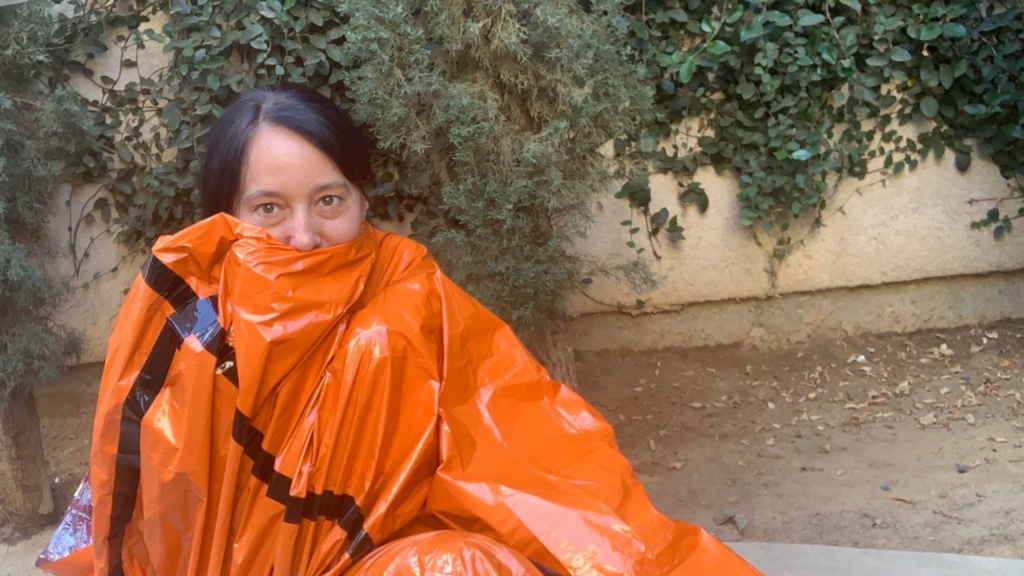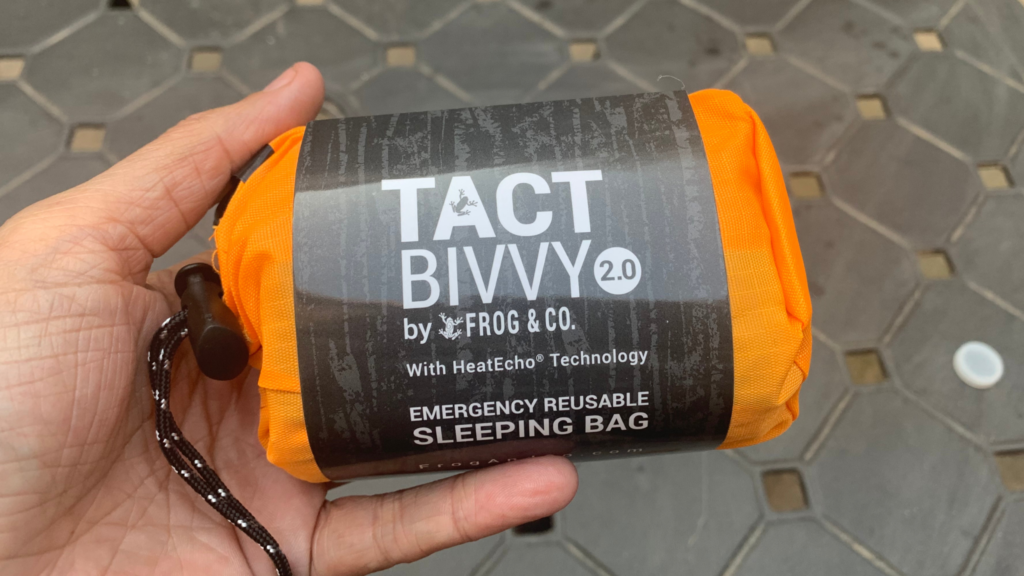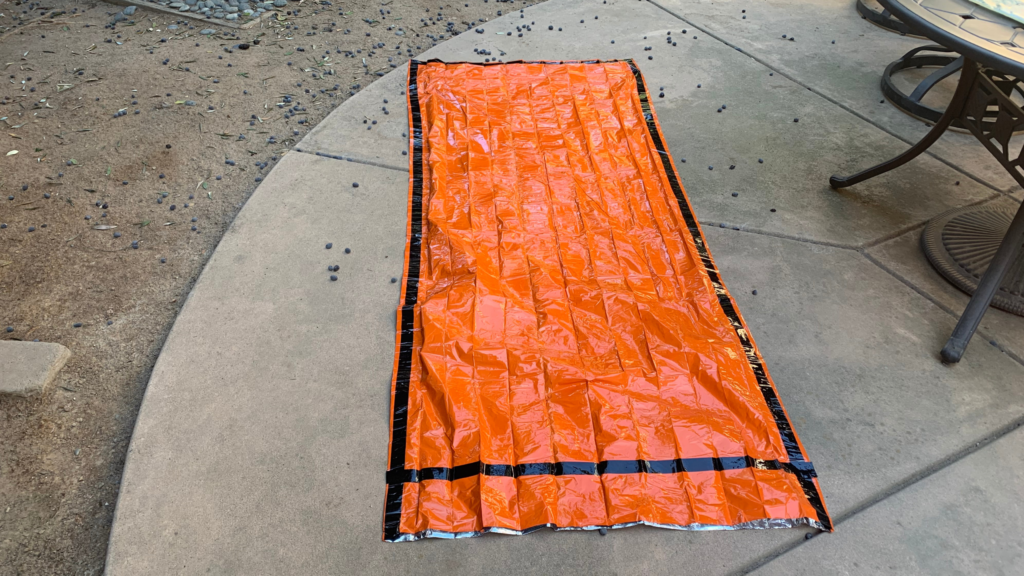Last Updated on October 12, 2020 by
If you’ve heard of the term “bivy sack” but aren’t sure what it really is, we are going to take a look at what this is and how useful it can be in an extreme survival situation. “What is a bivy sack?” is a question that often comes for beginning preppers, so let’s get down to the details!
What Is A Bivy Sack?
A bivy sack is a lightweight protective sheath-like casing that is designed to go over your sleeping bag to keep it warmer and weather-resistant. The bivy sack completely encloses your body inside while trapping your body heat to keep you warm and dry.
Bivy sacks are an amazing piece of gear that can be used for several different situations and can save your life when in extremely perilous situations. Let’s find out more below!
Bivy Sack Advantages
Bivy sacks are lightweight as compared to regular camping tents or sleeping bags. Their lightweight design gives them an edge over standard tools when it comes to survival situations.
Apart from their lightweight structure, they are also relatively warmer because they possess proper insulation that traps the heat inside, which makes it a few degrees warmer than the regular camping tents.
Another advantage of bivy sack is that they require very little space.
Bivy Sack Disadvantages
In contrast to the advantages, there are a few shortcomings of bivy sacks as well. First of all, they don’t have a lot of space, like camping tents. This can make them a little uncomfortable for some people, especially if you want to put your gear inside.
Bivy sacks aren’t as comfortable as regular camping tents, especially if you’re in rainy weather and condensation can build up inside the of the sack, making it wet inside.
How Does A Bivy Sack Work?

Bivy sacks consist of thin layers of fabric that have proper insulation from inside. The goal is to keep them as lightweight as possible. At the same time, they protect against wind chill and other environmental challenges.
Yet, if you look at Survival Frog’s Bivy Sack, it is made of mylar, as can be used by itself, or to cover a sleeping bag. This type of bivy protective sack is much different than Outdoor Research’s Helium Bivy, which is made with heavier duty material and zips up completely to protect the body.
Since our bodies continually emit heat into the atmosphere, the bivy sack is designed to trap that heat and keep it inside to make the bag warmer for you.
How To Use A Bivy Sack

Using a bivy sack is quite simple. First of all, you need to choose a flat surface. Make sure that the place you select has nothing harmful and pointy.
Also, make sure that the site is free from issues such as rainwater flow, etc. Apart from that, you will never want to sleep somewhere where you can quickly bury yourself in the snow if there is an avalanche.
Once you have selected the right sleeping spot, you need to place a sleeping mat inside of your bivy sack to give you a little bit more comfortability. Once the pad is laid snuggly inside of the bivy sack, you’ll now fit your sleeping bag inside the bivy sack. Once the sleeping bag is placed inside, you’ll be able to crawl in, and then zip the bivy sack over your body so you can completely enclose yourself within the sack.
Who Uses A Bivy Sack?
Bivy sacks are useful tools for those who love to carry items with little weight. Mostly mountaineers love to have bivy sacks. Apart from that, rock climbers and hikers also carry them due to their lightweight nature.
It allows them to sleep anywhere they want. In contrast to bivy sacks, tents are a bit heavy, and they also require a lot of effort to set them up.
How To Choose A Bivy Sack

Now that you know the answer to the question “What Is A Bivy Sack?“, let’s look at how you should choose a bivy sack. Selecting the right type of bivy sack for your need isn’t that hard. You need to keep a few points in mind, and it will help you choose a perfect tool for survival and camping.
First of all, you need to make sure that the bag you are going to choose is waterproof. If it isn’t completely waterproof, then it wouldn’t be very useful. During a survival situation, you need to be prepared for the worst. If it isn’t waterproof then you will need to take some extra measures such as using a tarp etc.
Secondly, your bivy sack should be as breathable as possible. When you breathe inside, and if the bag isn’t breathable, it will have condensation issues. Therefore, you need to double-check before investing your hard-earned money on one.
There are several types of bags. Some of them offer fully face-covering panels. In comparison, some of them don’t cover the face. If you live in a hot place, you need to select the one with a mesh panel.
It will protect you from insects such as bugs and mosquitos during the night. Moreover, a bag with proper ventilation is highly recommended.
Lastly, your bag should be highly compressible to make it easy to carry around whenever you need to.
The Difference Between A Tent And A Bivy
If you are a complete newbie looking to gather information about survival tools, you should know the difference between a tent and a bivy. They both may sound a bit familiar because both of them provide shelter to campers, mountaineers, and survivors.
However, there is a few important differences between a tent and a bivy.
Size
In terms of size, the bivy is much smaller compared to a tent. It allows you to compress it and place it in your backpack or bug out bag without any issue. It doesn’t require a lot of space even for setting and using it.
In contrast, the tent requires a lot of space to set while making shelter. Apart from that, tents can be a little more difficult to carry around in a bug out bag.
Capacity
Technically speaking, the bivy offers very little space. Some of them hardly store your items inside. They are narrow and don’t even allow you to turn around.
Having that said, tents are more comfortable as they have a lot of space inside. Mostly tents can store all of your items including your cooking stove.
Cost
Cost wise the bivy sacks are a bit expensive as compared to the regular camping tents. This is because they use special kinds of fabrics that prove to be more insulated. The special kind of fabric enables the bivy to be a few degrees warmer than the tents.
When Is A Bivy Sack Better Than A Tent?
You may be wondering when the best time to use a bivy sack as opposed to a tent. Bivy sacks are so incredibly light weight and compact, that they work well if you are a true minimalist and looking for complete packing ease.
The first obvious reason to use a bivy sack is its lightweight. If you take Survival Frog’s Tact Bivy, for example, it only weighs 6.2 ounces. This is a perfect excuse in itself to pack this in a bug out bag.
The second reason is the fact bivy sacks are extremely compact. If you look at Survival Frog’s Tact Bivy, you will see that it fits in the palm of your hand when packed inside of its sleeve. The bivy sack has a hook that you can attach to any MOLLE strapping or the outside of your backpack.
Thirdly, if you are going to be sleeping in a tight spot, a bivy sack allows you to nestle into smaller spots as there isn’t much material to get in the way. If you’ve decided to make a run for the hills during a SHTF situation, you may find yourself in less than desirable places to sleep, so the tact bivy helps keep you comfortable and warm with little space required.
On top of this, when it comes to warmth, a bivy sack is perfect for trapping your body heat within the shell. With these bivy sacks being water-resistant, it will help keep you dry, while at the same time keeping enough ventilation and breathability while you’re inside.
Lastly, these minimalist sacks are quite efficient because there’s virtually no setup required, such as you will find with a tent. You will save valuable time and energy that can be used for other survival tasks at hand.
Related Questions And Answers

Are Bivy Sacks Warmer Than Tents?
Surprisingly, bivy sack can offer about 4-8 degrees of extra warmth than a tent. The reason for this is that a bivy sack has a smaller capacity than a tent, which allows your body heat to be maintained at a greater rate. In a way, it’s the same reason it’s faster to heat up a one-story home as opposed to a two-story home.
Because a bivy sack completely encloses your body, there’s no way to let the heat out from within the sack. It’s a fantastic system for keeping your body protected from the elements.
How Much Warmth Does A Bivy Sack Add?
Bivy sacks can beat the regular tents in temperature. Bivy sacks, as mentioned above, can give you up to 8 degrees more temperature as compared to the normal tents. It is due to their low capacity design that keeps the warmth of your own body around you.
Do You Need A Tarp With A Bivy?
Using a tarp with a bivy isn’t necessarily needed, but it can definitely help. Some people will lay a tarp down on the ground first to protect them from the cold, wet ground, then lay the bivy sack on top of that.
Some people will do the opposite, and put the tarp over the bivy for extra protection. But for true minimalists such as rock climbers and backpackers, taking adding extra bulk to their packs isn’t an option.
My recommendation is to get your own bivy and test it out a few times on a camping trip, for example, and see what works best for you.
Do You Put Your Sleeping Pad Inside Or Outside Your Bivy?
Technically, you should plan on putting your sleeping pad inside of your bivy. The question is whether or not it fits or not. Typically the sleeping pads that go inside these bivy sacks are very thin and small so you should have no problem. Make sure if you are going to buy a bivy sack, that you have a sleeping pad that fits.
Once you get the sleeping pad inside of the bivy sack, you can then lay your sleeping bag on top of the sleeping pad and then crawl inside and you’ll be fully covered.
Final Thoughts
I hope this answered the question of “What is a bivy sack?” Bivy sacks are great pieces of equipment for those who want to go out carrying as lightweight as possible. They are a great replacement for the regular camping tents as they don’t require a lot of effort to set them up. Apart from that, they are compact and don’t require a lot of space and I love them!
If there’s anything you would like to add to this post or any insight you have on this subject, please feel free to comment below. I would love to hear from you!
